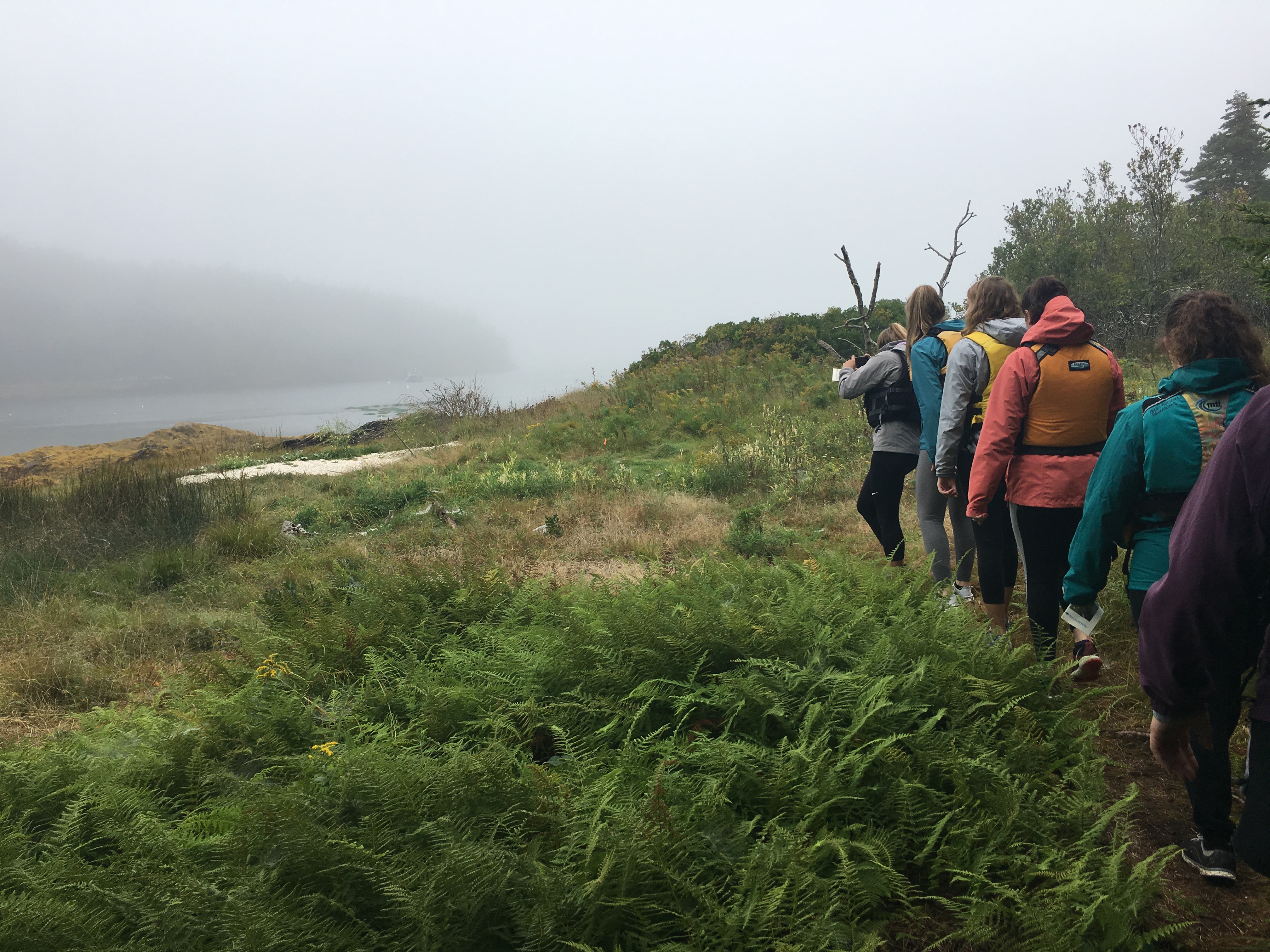By Zoe Bernardi, Staff Writer
Malaga Island is a small piece of land off the coast of Phippsburg, Maine, a community that use to consist of people of mixed races during the early 1900s. In 1912 the entire population was forced to leave the island, erasing all of its history. The people were forced to leave was due to a mixture of economic issues, racism, eugenics and political retribution. The entire population of the island was made up of 45 people and the descendants of them are still living today. Only those with a direct ancestry to the island can stay overnight, others can only temporarily visit.
The only way to reach the island is by boat. Alice Bean Andrenyak runs Alice’s Awesome Adventures, which is a kayak tour around Malaga Island. Myself and six other girls from my COR 101 class went on this trip, with our teacher Samantha.
This is how our tour played out.
6:30 a.m. wake up
Yes 6:30 on a Saturday morning, the entire campus was one huge foggy mess
7:30 a.m. departure
Leaving for Harpswell, Maine. In the car there were three other girls and myself. Since it was so early, we all just sat comfortably in the silence with only the music and directions interrupting. A few laughs were made while discussing whether or not to stop for a squirrel in the road was the correct thing to do. I said no, but everyone else said they would, on this trip we slowed down twice, one time we practically stopped.
8 a.m. breakfast
Breakfast was made up of both a nutritious and delicious menu: poptarts and trail mix.
9 a.m. arrive at our destination
We arrived, just not in the correct area, after a phone call and typing in a new location, we arrived to the right destination, on time.
9:15 a.m. a lovely welcome
Our tour guide Alice greeted us with huge hugs and a warm smile, she then proceeded to tell us how the morning would run. Starting by getting the seven kayaks from her car and trailer, we then brought them down to the edge of the water on the beach. My friend and I climbed into the only double kayak, while everyone else got into theirs. The tour then began.
It starting with the sea lions singing their morning songs to us and seeing starfish swim just below our boats. We all learned more about each other, sharing stories and spreading laughter as we make jokes about what the seals were saying. The bay breeze was cool and salty which brought everyone to ease as we moved farther and farther away from the shore to where we could no longer see our parked cars.
We learned about the wildlife of the area and the fisherman who worked on the boats. We then arrived at the island. One by one we got out of our kayaks and walked our sea legs off from the shore onto the island. Walking around learning about the different buildings that were once there, what the natives ate, how they traveled and lived. All this was happening as we were being completely eaten up by the most viscous mosquitoes. Then Alice handed out maps and let us explore the island on our own.
We continued to walk through the leafy green and dirt paths until we found the remains of what looked like a shack. On Malaga Island all the floors of the buildings were shells. All around the island, large rectangular patches of white shell remained exactly where they were left. The day was still one foggy mess, it felt as if the island was the only thing in the water, nothing else around us. It was serene, calm and the smell of the salt water and plantation filled our lungs. After walking around, we ate perfectly square double chocolate brownies.
The low tide of the water was beginning to creep higher on to the shore. We all got into our kayaks and back into the water to make our way back to the cars, as a light sprinkle of rain began.
After getting back and loading the kayaks back onto Alice’s trailer, we were awarded with stickers and more hugs. We walked back to our cars, sat down and drove back to campus. Thinking of the memories and the pieces of history we learned, we felt fulfilled as we had just spent our Saturday morning in the water surrounded by nature and new friends.
Malaga Island was not only a learning field trip, but an experience that brought me closer to new people and this small section of history Maine has to offer.

